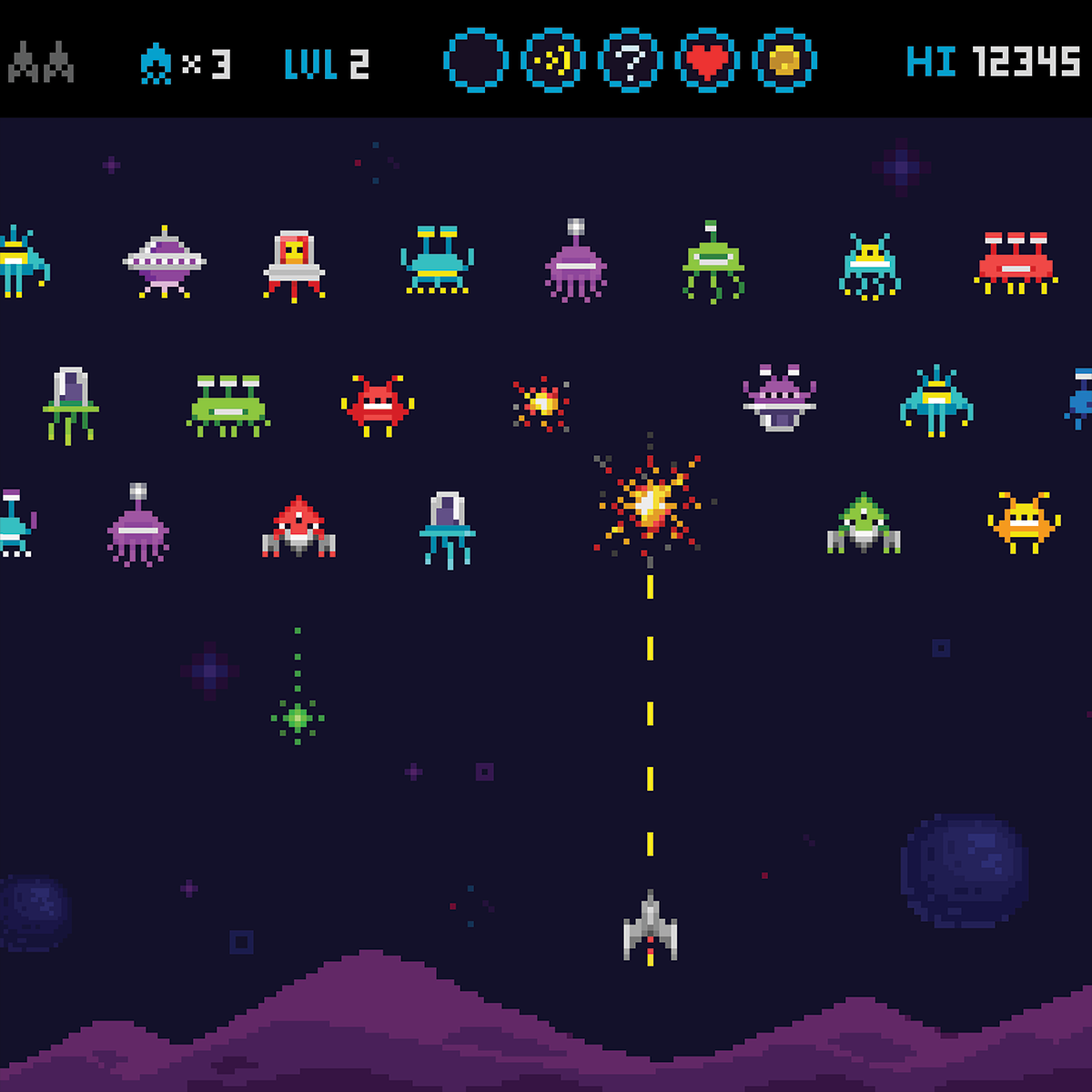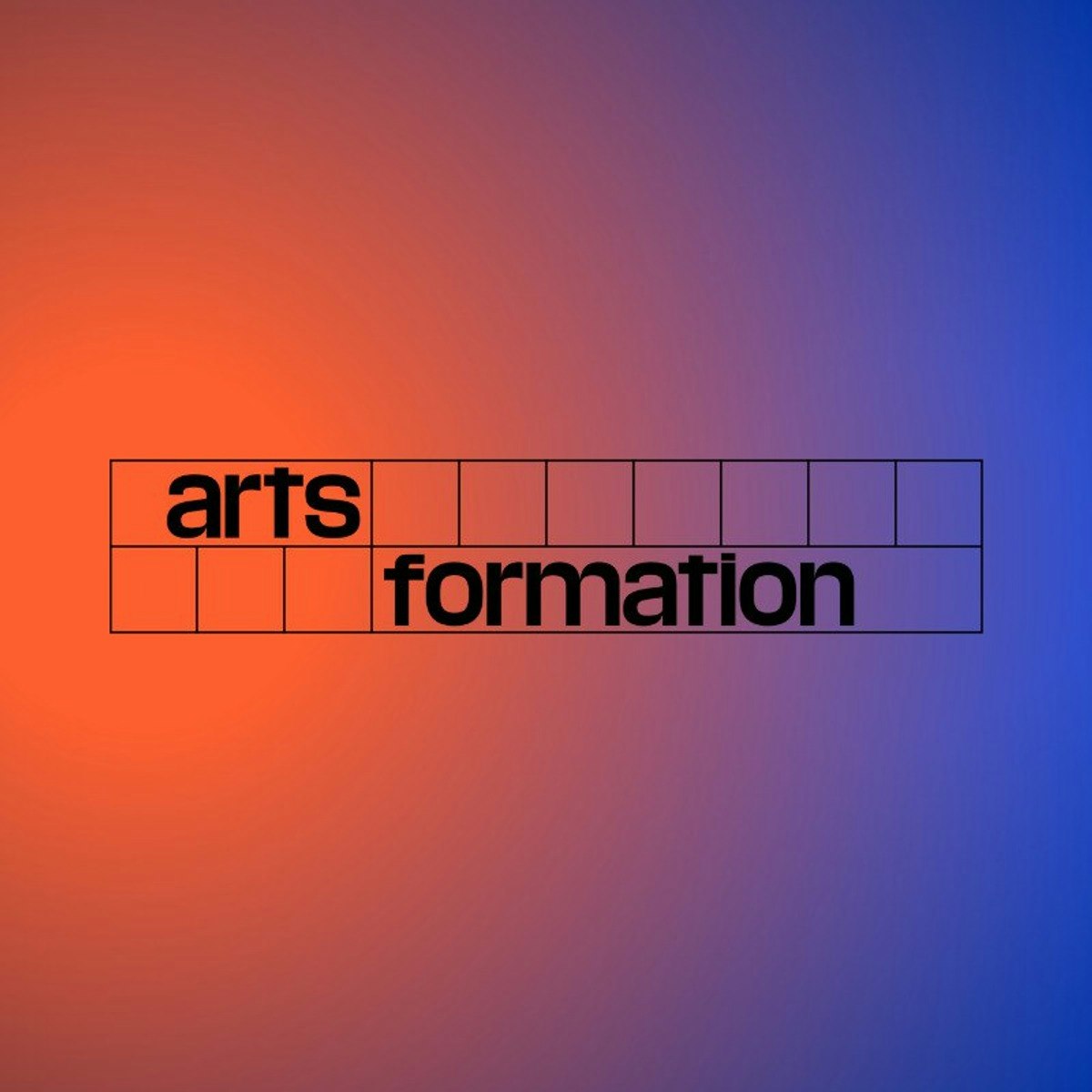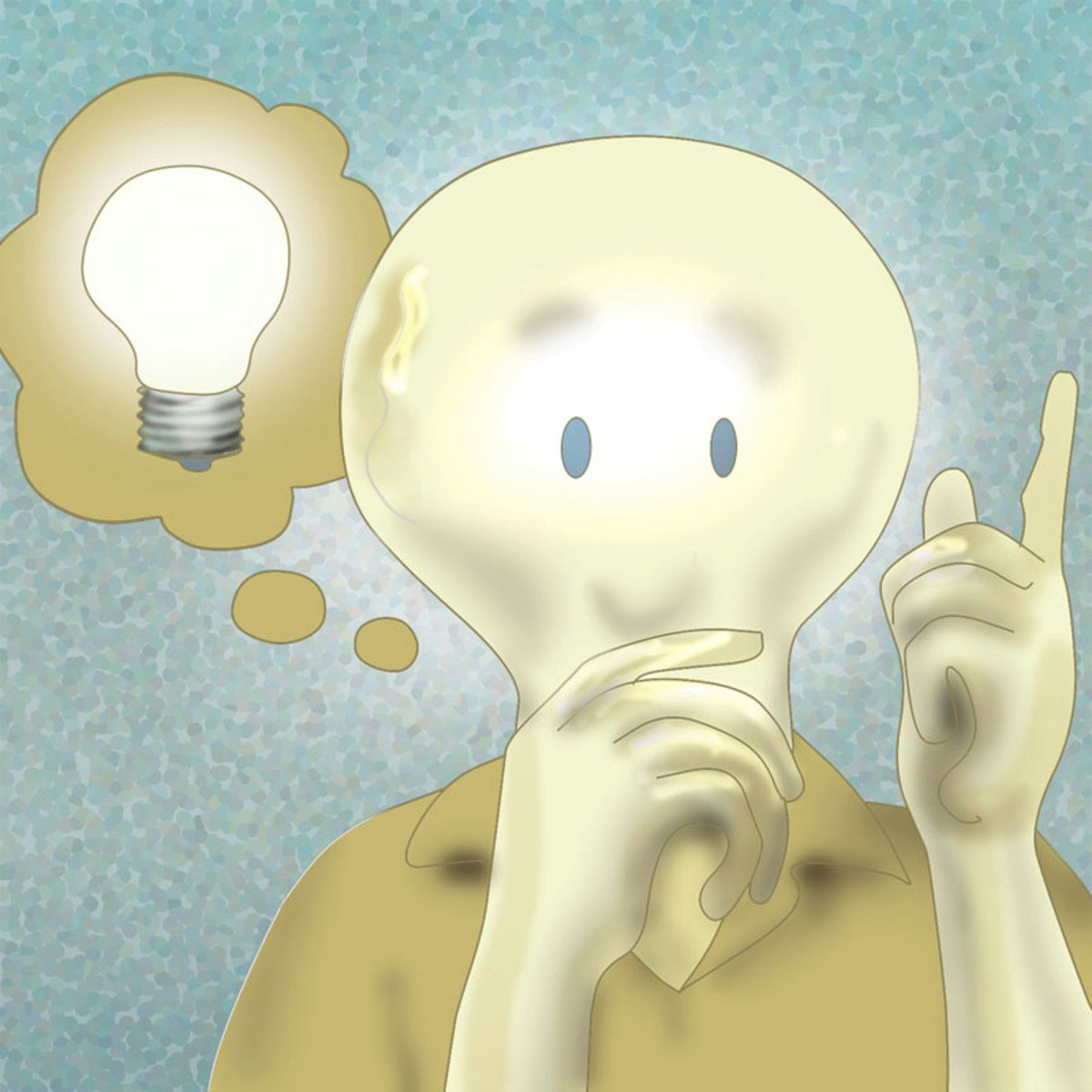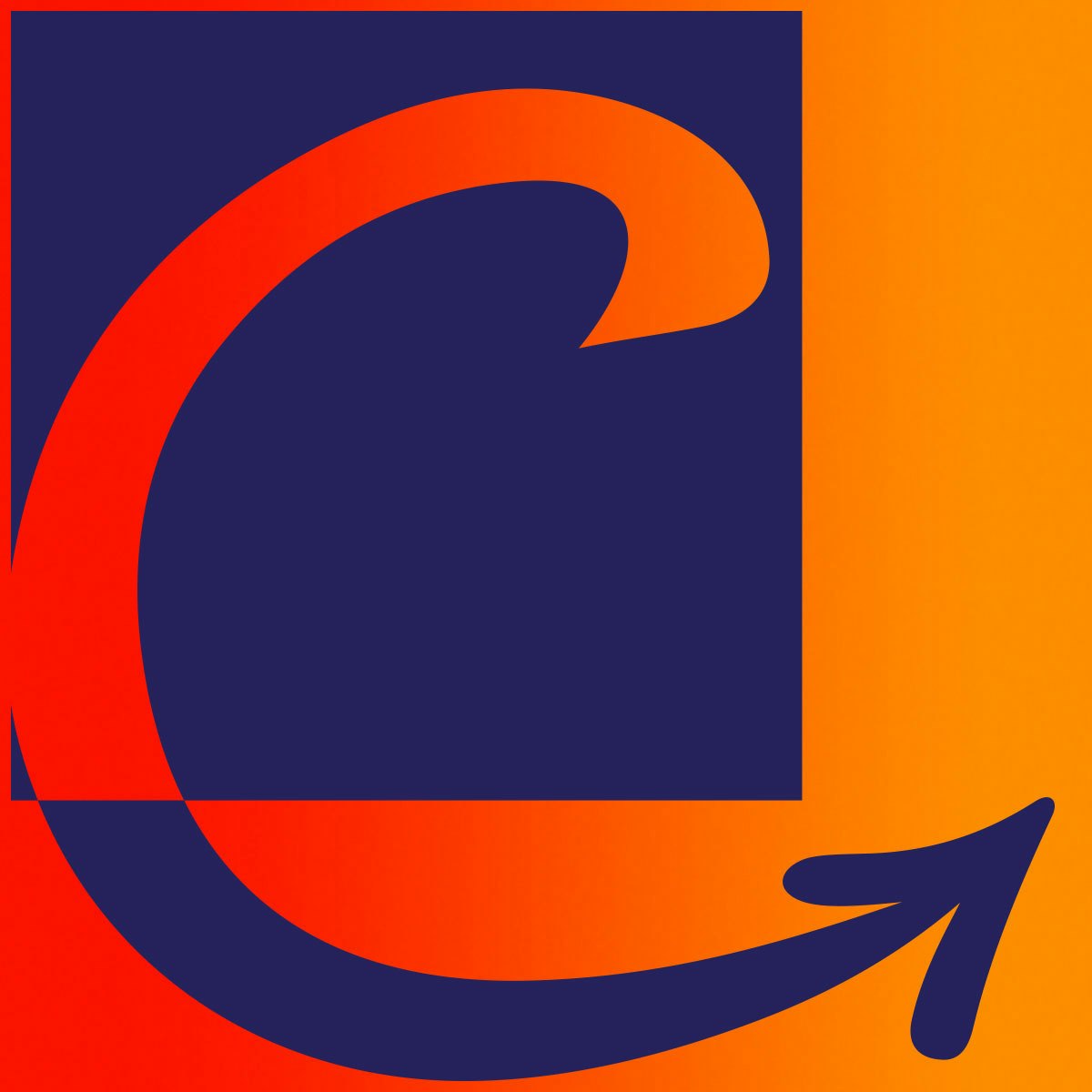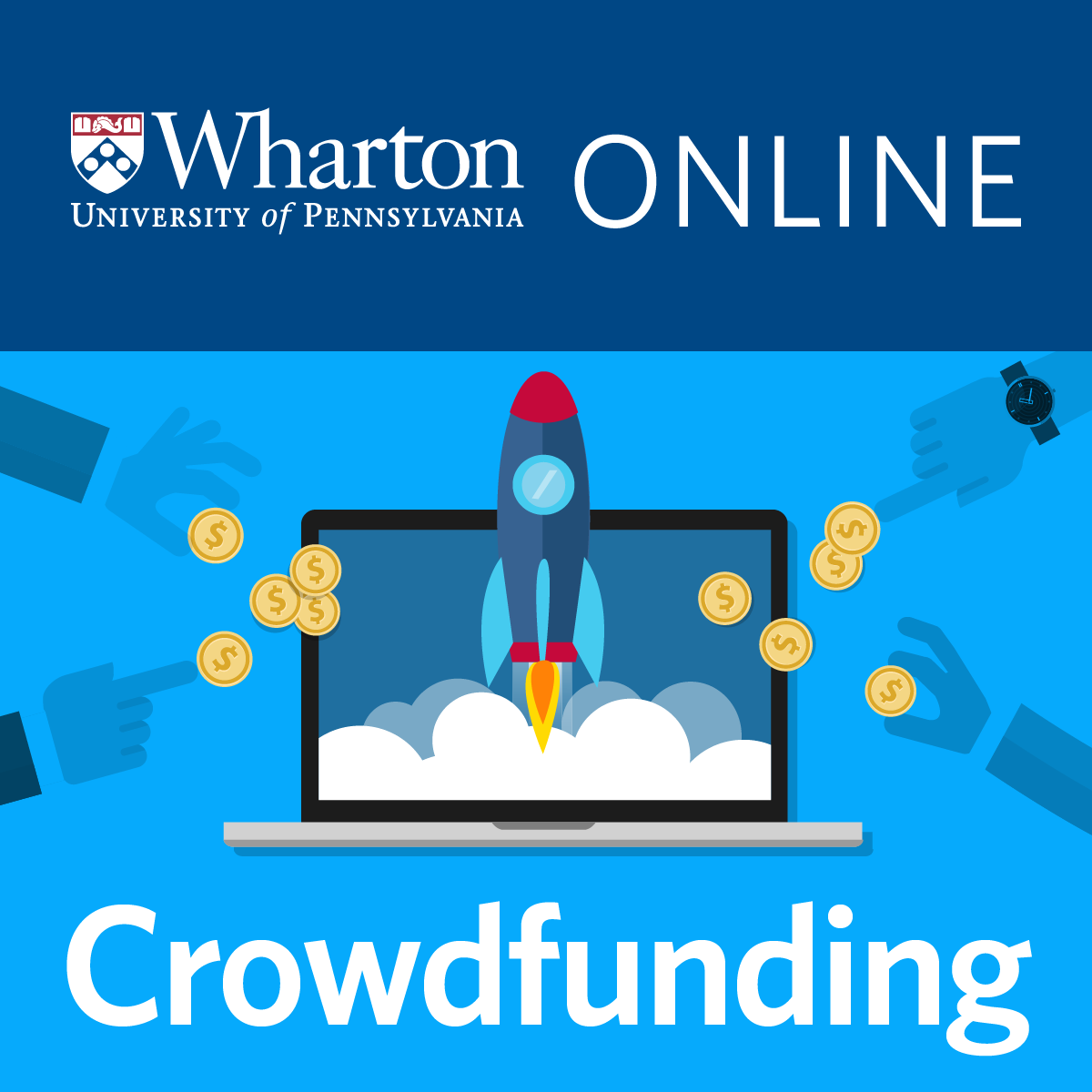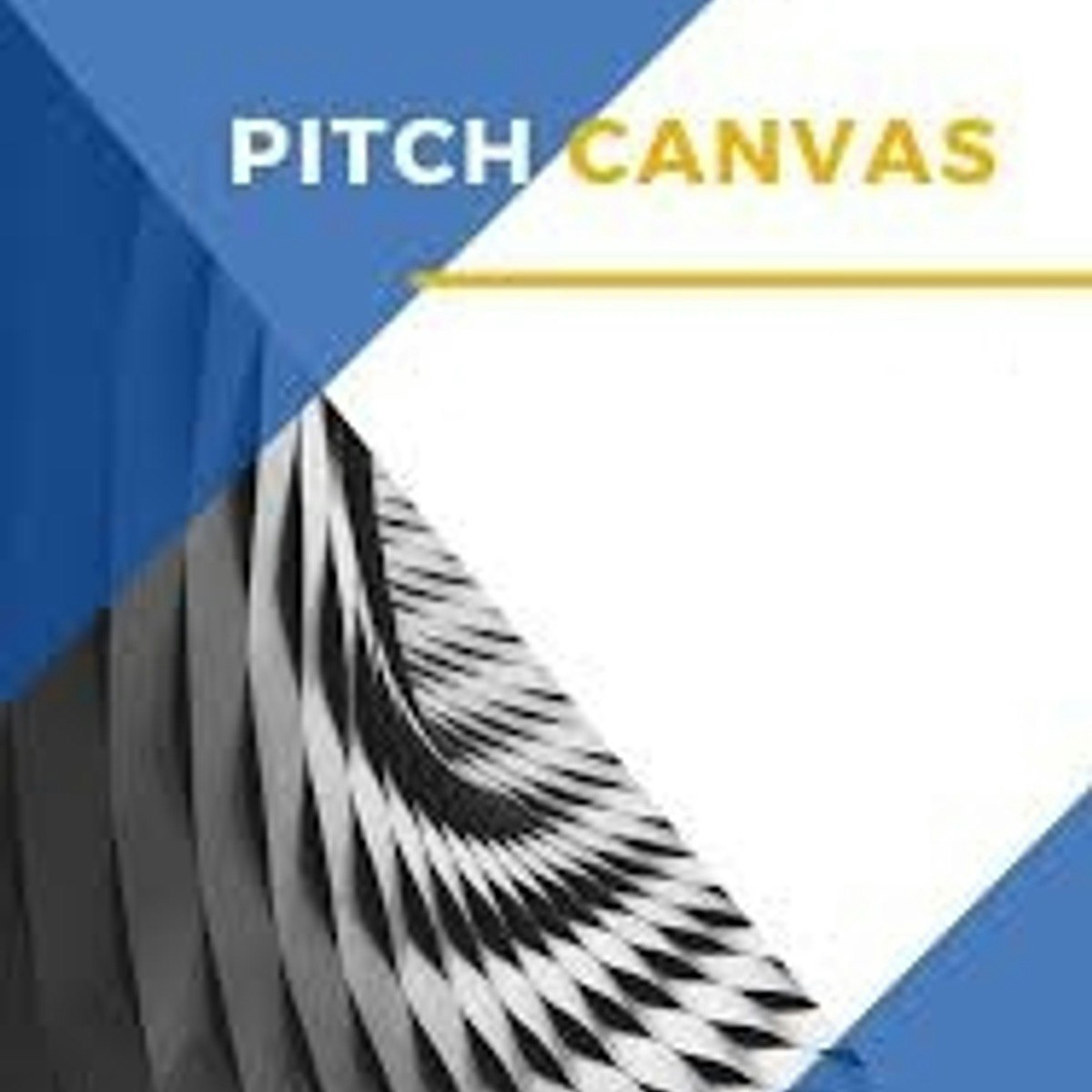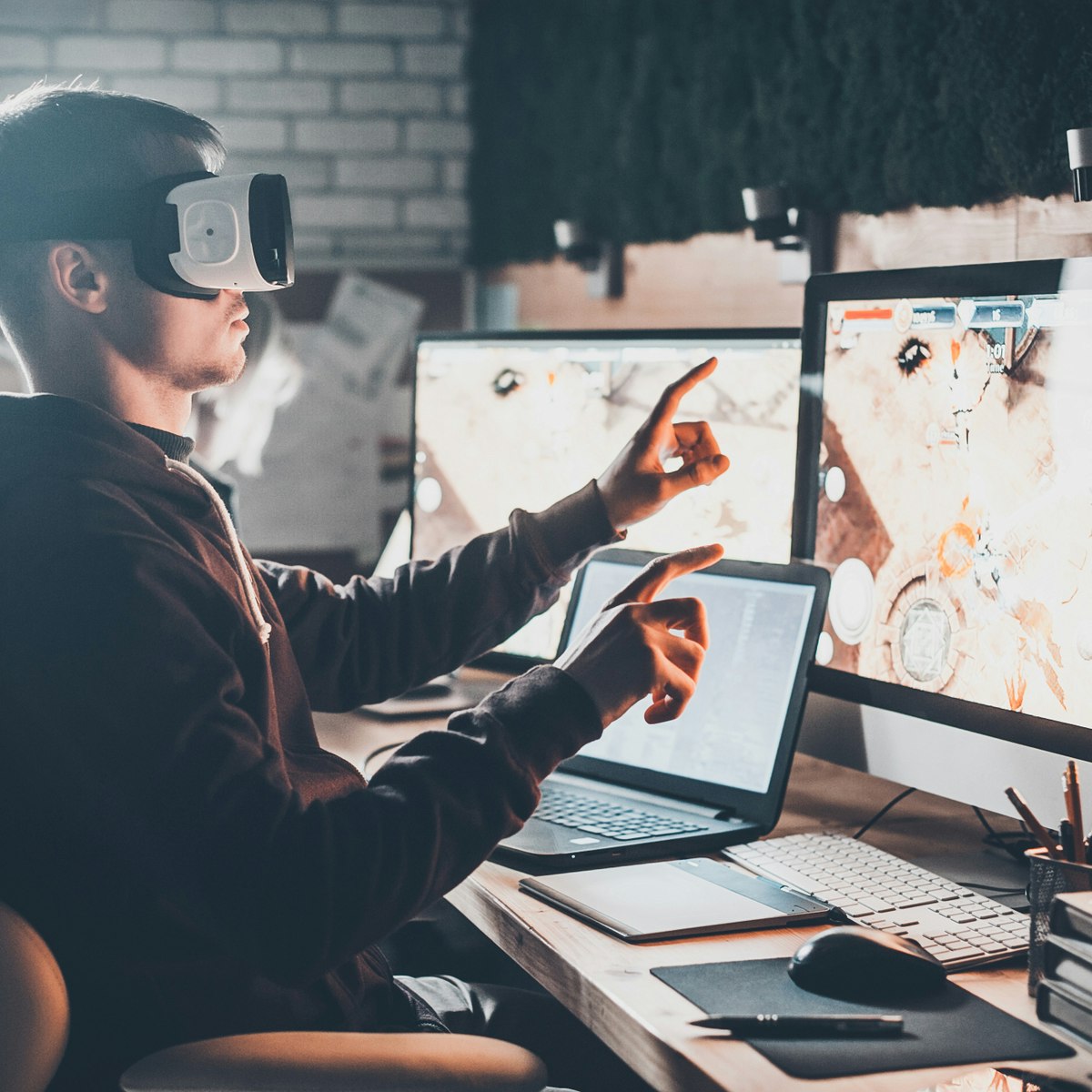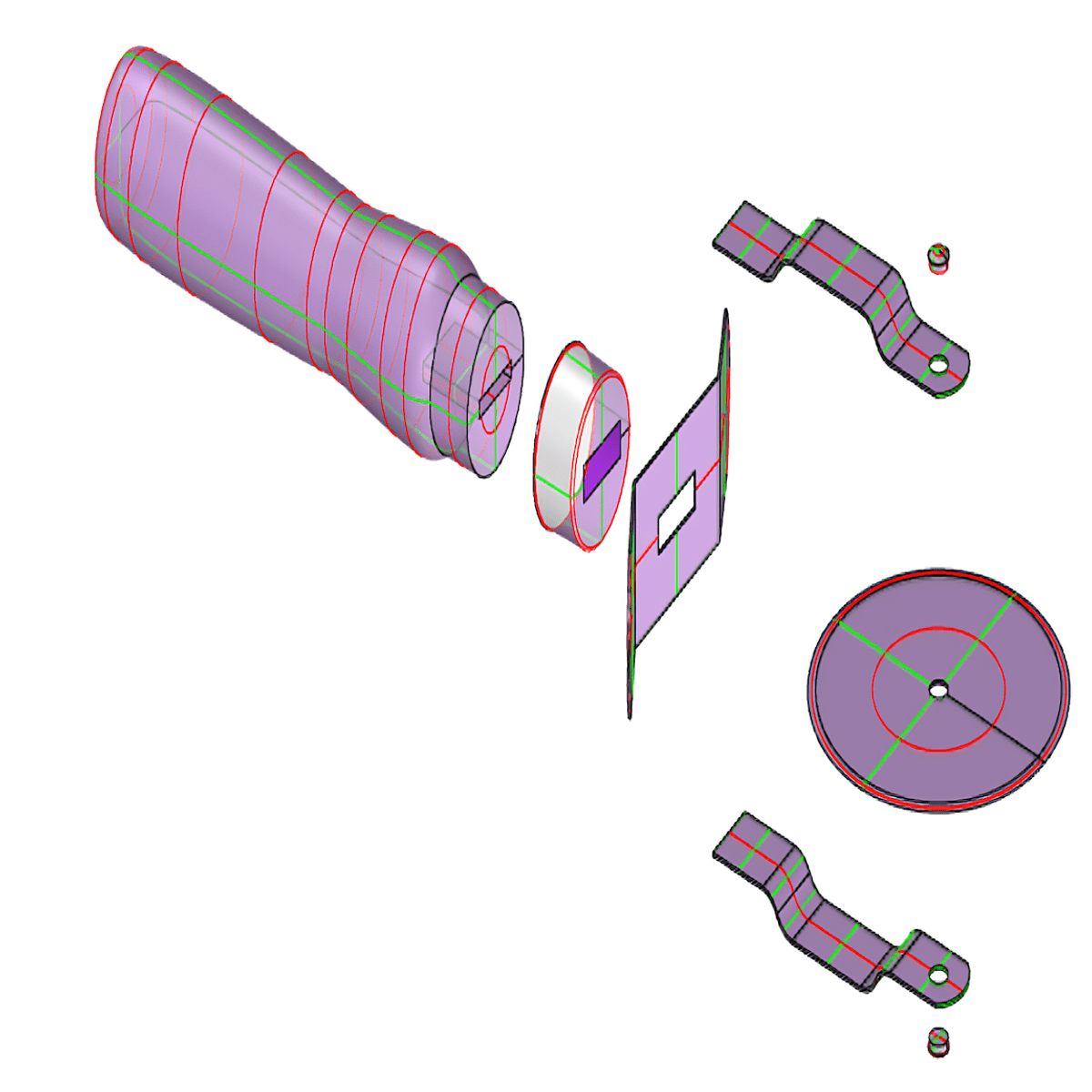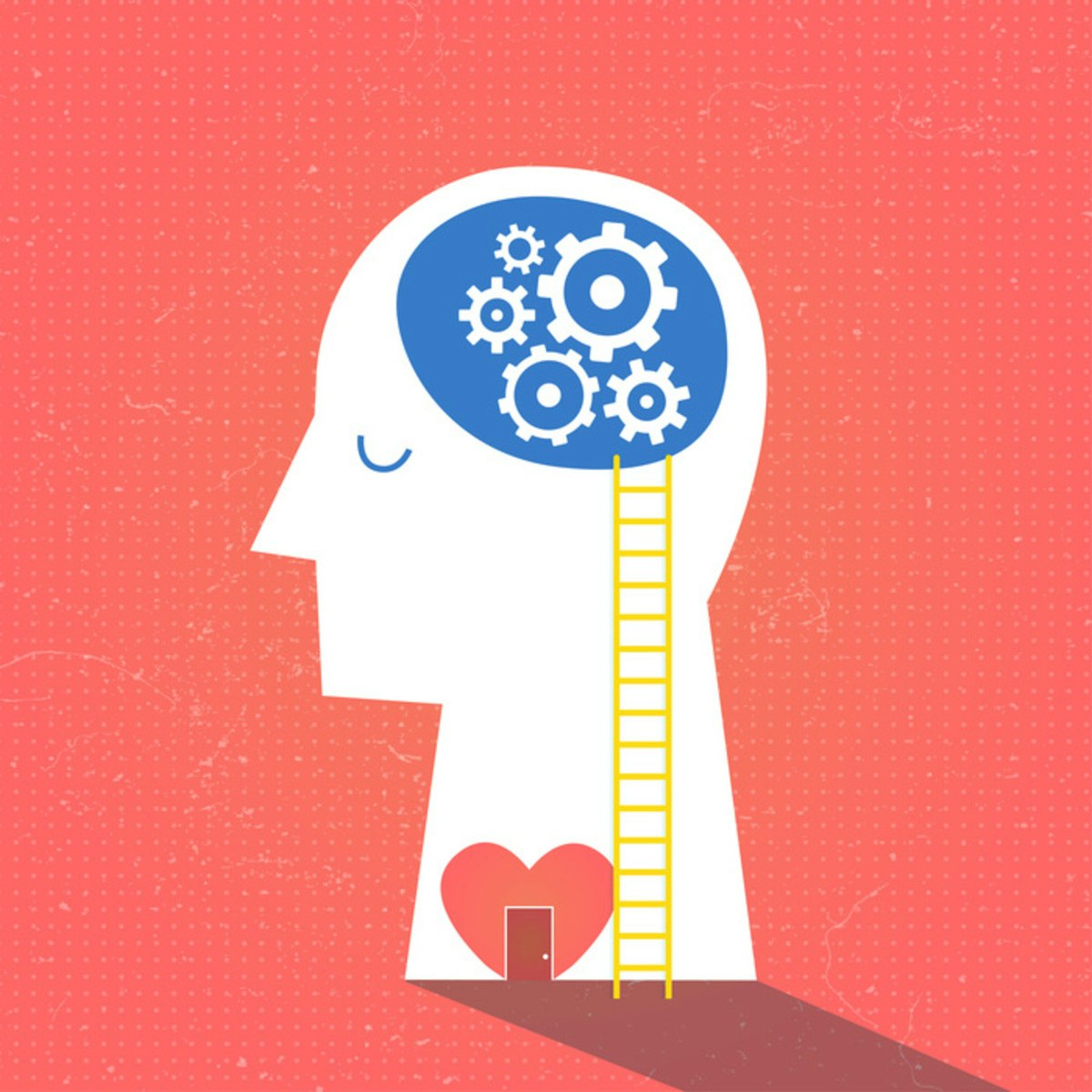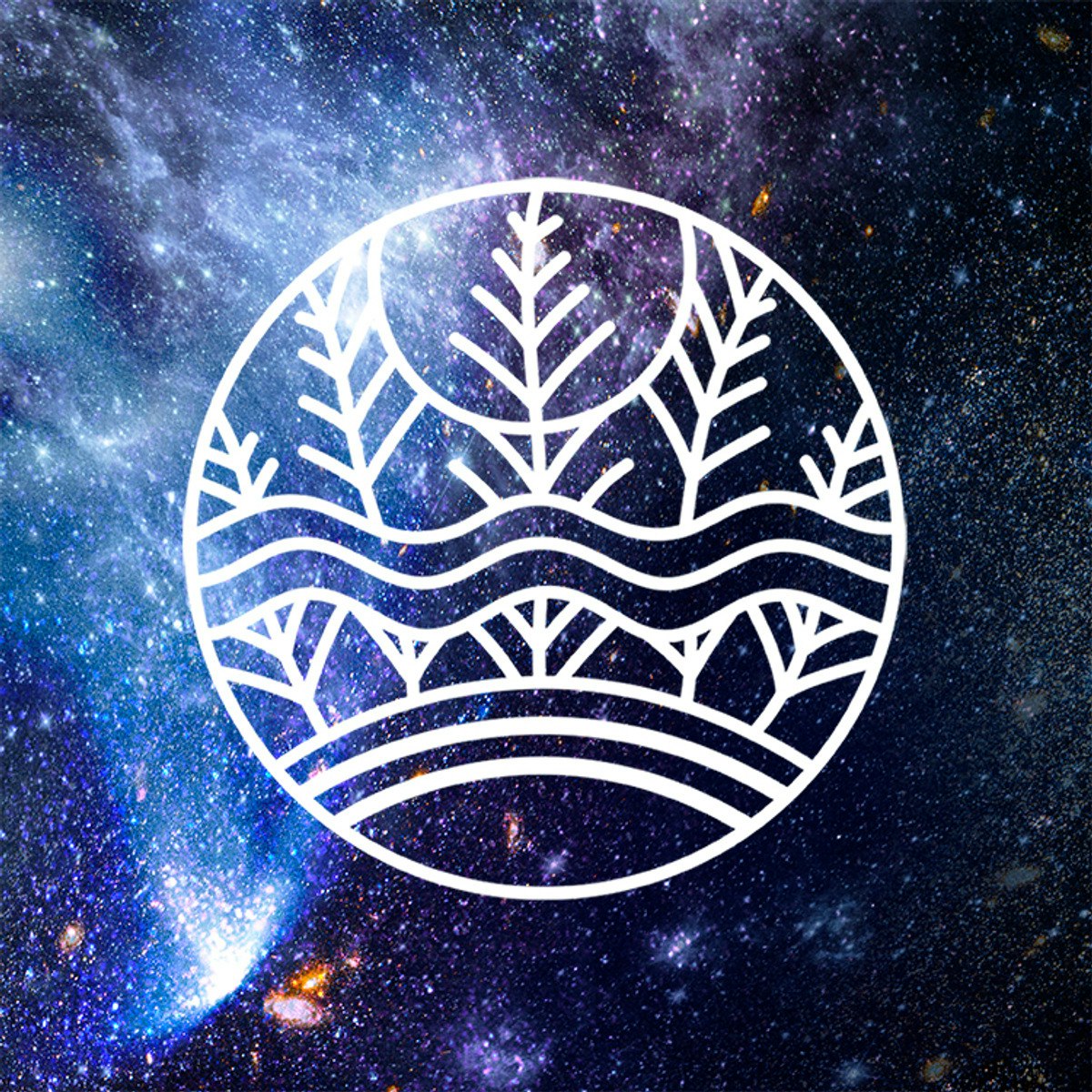Artist
Artist: A Career Exploration
An Artist is a professional who creates works of art, using their imagination, skill, and chosen medium to express ideas, emotions, or aesthetics. The scope of this career is vast, encompassing traditional forms like painting, sculpture, and drawing, performance arts such as music, dance, and theatre, and modern digital mediums including graphic design, animation, and virtual reality installations. Artists contribute significantly to culture, communication, and commerce, shaping how we perceive the world and interact with each other.
Working as an artist can be deeply rewarding, offering avenues for profound self-expression and the chance to connect with audiences on an emotional or intellectual level. Many find excitement in the continuous process of learning, experimenting with new techniques, and pushing creative boundaries. The potential to leave a lasting impact through their work also motivates many individuals pursuing artistic careers.
What Does an Artist Do?
The daily life of an artist varies greatly depending on their discipline, employment status (freelance vs. employed), and current projects. However, core activities often revolve around the creative process: conceptualizing ideas, researching, experimenting with materials, producing the artwork, and refining it based on critique or self-assessment. This requires discipline, time management, and persistent effort.
Daily Responsibilities and Creative Processes
Artists typically dedicate significant time to honing their craft through practice and creation. This might involve sketching, drafting, rehearsing, coding, or sculpting. Research, whether into subject matter, historical context, or new techniques, is also a common daily task. Many artists spend time on administrative duties like corresponding with clients, managing finances, marketing their work, or applying for grants and exhibitions.
The creative process itself is often iterative. It starts with inspiration or a specific brief, moves through stages of exploration and development, involves problem-solving when challenges arise, and culminates in a finished piece. This journey demands both imaginative thinking and practical execution skills.
Maintaining a consistent creative practice can be challenging. Artists often develop routines or rituals to foster focus and productivity. Overcoming creative blocks is a common hurdle, requiring resilience and strategies like seeking new inspiration, collaborating, or simply taking a break.
Key Mediums and Tools
Artists employ a diverse range of mediums and tools. Traditional visual artists might work with oils, watercolors, clay, stone, or textiles, using brushes, chisels, looms, or their hands. Performing artists use their bodies, voices, or instruments. Writers use language, while photographers use cameras and light.
Digital tools have become increasingly central across many artistic fields. Graphic designers rely on software like Adobe Illustrator and Photoshop. Animators use specialized animation software, game developers utilize engines like Unity or Unreal Engine, and digital sculptors work with programs like ZBrush. Even traditional artists often use digital tools for planning, promotion, or creating digital versions of their work.
The choice of medium significantly influences the final artwork and the process of creation. Mastery of specific tools, whether a paintbrush or a piece of software, is fundamental. Continuous learning is often necessary as new materials, techniques, and technologies emerge.
These courses offer hands-on instruction in specific artistic mediums and tools, covering both traditional and digital approaches.
Collaboration and Client Interaction
While some artists work in solitude, many collaborate with others. Visual artists might work with galleries, curators, printmakers, or foundries. Performing artists often collaborate with directors, choreographers, musicians, and designers. Digital artists frequently work in teams, especially in fields like game development, animation, or film production.
Working with clients is common, particularly for commercial artists, illustrators, designers, and photographers. This involves understanding client needs, interpreting briefs, presenting concepts, incorporating feedback, and managing project timelines and budgets. Strong communication and negotiation skills are vital for successful client relationships.
Collaboration can enrich the creative process, bringing diverse skills and perspectives together. However, it also requires effective teamwork, compromise, and clear communication to navigate potential creative differences or logistical challenges.
Evolution in the Digital Age
The digital revolution has profoundly reshaped artistic careers. The internet provides unprecedented platforms for artists to showcase their work, connect with global audiences, and sell directly to consumers. Social media, online portfolios, and e-commerce platforms have become essential marketing and sales tools.
Digital technologies have also created entirely new artistic disciplines and transformed existing ones. Digital painting, generative art, interactive installations, virtual reality experiences, and NFTs (Non-Fungible Tokens) represent new frontiers for creative expression and commerce. This necessitates ongoing adaptation and skill development for artists wishing to remain relevant.
While offering immense opportunities, the digital age also presents challenges. Increased global competition, the need for digital literacy, issues surrounding digital copyright, and the potential for algorithmic bias in discovery platforms are all factors artists must navigate.
This course explores the intersection of art and the digital world, providing insights into how technology is changing creative practices.
Formal Education Pathways for Artists
Pursuing a formal education in the arts can provide structured training, critical feedback, historical context, and valuable networking opportunities. While not the only path to becoming an artist, it is a common route for many, offering a dedicated environment to develop skills and artistic vision.
Pre-University Art Education
Exposure to art often begins early, through school art classes or extracurricular activities. For high school students serious about an art career, specialized programs, magnet schools, or pre-college summer intensives can offer more focused training. Building a strong foundational skillset in drawing, design principles, and chosen mediums during this time is beneficial.
Developing an initial portfolio during high school is crucial for admission into competitive undergraduate art programs. This portfolio should showcase technical skill, creativity, and a developing personal style. Seeking guidance from art teachers or mentors can be invaluable during this stage.
Engaging with art history and contemporary art practices also helps aspiring artists understand the broader context of their potential field. Visiting museums, galleries, and reading about art are important activities.
Undergraduate and Graduate Degrees
A Bachelor of Fine Arts (BFA) is a common undergraduate degree focusing on studio practice, critique, and art history. Bachelor of Arts (BA) programs often combine art studies with a broader liberal arts education. Specializations can range from painting and sculpture to graphic design, photography, or digital media.
Master of Fine Arts (MFA) programs offer advanced, intensive studio practice and critical discourse, often considered the terminal degree for practicing artists and a requirement for teaching at the university level. Master of Arts (MA) degrees in fields like Art History or Arts Administration focus more on research, theory, or management.
Choosing the right program involves considering faculty expertise, facilities, program philosophy (theory vs. practice focus), location, and cost. Visiting campuses, speaking with current students, and reviewing faculty work can aid in this decision.
Explore foundational concepts in art history and theory through these resources.
Advanced Research and Practice
For artists interested in deep theoretical research or pushing the boundaries of artistic practice through scholarly inquiry, Doctor of Philosophy (PhD) programs in Art History, Theory, or Practice-Based Research exist. These programs typically involve extensive research, writing a dissertation, and contributing original knowledge to the field.
Practice-based PhDs allow artists to integrate their studio work directly into their doctoral research, often culminating in both a written thesis and a significant body of creative work. These programs bridge the gap between artistic creation and academic scholarship.
Such advanced degrees are generally pursued by those aiming for careers in academia, museum curation, high-level arts administration, or research-intensive artistic practice. They demand rigorous intellectual engagement and a strong commitment to scholarly investigation alongside creative output.
Portfolio Development Strategies
A strong portfolio is arguably the most critical asset for an artist, often weighing more heavily than academic credentials in securing opportunities like gallery representation, commissions, or employment. It serves as a visual resume, showcasing technical abilities, creative vision, and professional presentation.
Developing a portfolio is an ongoing process. It should include recent, high-quality work that represents the artist's best abilities and current artistic direction. Selectivity is key; it's better to show fewer strong pieces than many mediocre ones. Tailoring the portfolio to specific opportunities (e.g., gallery submission vs. job application) is often necessary.
Professional documentation of artwork (high-resolution photographs or videos) is essential. An online portfolio website is standard practice, providing easy access for curators, clients, and employers. Platforms like Behance or personal websites are commonly used. Regularly updating the portfolio and seeking feedback are important maintenance steps.
Online Learning and Self-Directed Study
The rise of online learning platforms has democratized access to art education, offering flexible and affordable alternatives or supplements to traditional schooling. For career pivoters, lifelong learners, or those geographically distant from art institutions, online resources provide valuable pathways for skill development and creative exploration.
OpenCourser simplifies the search for relevant courses across various platforms, making it easier to find instruction tailored to specific interests and skill levels.
Effectiveness for Technical Skills
Online courses are particularly effective for teaching specific technical skills. Detailed video demonstrations allow learners to observe techniques closely and repeatedly. Areas like digital software proficiency (e.g., Photoshop, Illustrator, 3D modeling), specific painting or drawing techniques, craft-based skills (e.g., ceramics, printmaking basics), and photography lend themselves well to online instruction.
Many platforms offer project-based courses where learners create tangible work, receiving feedback either through automated systems, peer review, or instructor interaction. This hands-on approach reinforces learning and helps build a portfolio. The ability to learn at one's own pace is a significant advantage for many.
While online learning excels at technical instruction, replicating the in-person critique, spontaneous collaboration, and immersive environment of a traditional studio can be challenging. Learners may need to proactively seek out critique communities or local artist groups to supplement their online studies.
These online courses focus on specific technical skills applicable across various artistic disciplines.
Building a Self-Directed Curriculum
With the abundance of online resources, learners can curate their own educational path. This requires self-discipline and clear goals. Start by identifying desired skills or areas of knowledge. Research available courses, tutorials, books, and online communities relevant to those goals.
Structure your learning by setting achievable milestones and dedicating regular time for study and practice. Combine theoretical learning (art history, color theory) with practical application (exercises, projects). Utilize platforms like OpenCourser to discover and compare courses, and save potential options to a personalized list using the "Save to List" feature.
Supplement structured courses with free resources like YouTube tutorials, artist blogs, museum websites, and digital archives. The key is to create a balanced and progressive learning plan tailored to individual needs and aspirations, adjusting it as you progress and discover new interests.
Combining Online Study with Personal Projects
Applying learned skills to personal projects is crucial for solidifying knowledge and developing a unique artistic voice. Online courses provide the foundation, but self-initiated projects allow for experimentation, problem-solving, and the integration of different techniques.
Choose projects that genuinely interest you and push your current skill level slightly. Document your process, not just the final outcome. This can involve sketching ideas, experimenting with materials, and reflecting on challenges and successes. Sharing work-in-progress online can provide valuable feedback and motivation.
Personal projects are excellent portfolio builders. They demonstrate initiative, creativity, and the ability to see an idea through to completion. These projects distinguish an artist beyond course exercises and showcase their individual style and interests.
Certification vs. Skill Acquisition
Many online courses offer certificates upon completion. While these can demonstrate commitment and provide a sense of accomplishment, their value in the art world varies. For artists, the portfolio demonstrating tangible skills and a unique vision typically carries more weight than certificates, especially in fine arts fields.
However, in specific technical areas like software proficiency or specialized crafts, certifications might hold more sway with employers or clients. Consider the specific field and career goals when evaluating the importance of certificates. The primary focus of online learning for artists should generally be on acquiring demonstrable skills and building a compelling body of work.
Ultimately, the proof is in the work itself. Whether self-taught online or formally educated, artists are judged by the quality, originality, and execution of their art. Use online learning as a tool to build those essential qualities. OpenCourser's Learner's Guide offers insights on leveraging online course certificates effectively.
Career Progression in Artistic Fields
The career path for an artist is rarely linear and often involves a mix of creative work, self-promotion, and business management. Progression depends heavily on the specific discipline, talent, persistence, networking, and a degree of luck.
Early Career Roles and Building Recognition
Entry into an artistic career often involves building a portfolio and seeking initial exposure. This might mean participating in group shows, selling work at local markets or online, taking on small commissions, or finding entry-level positions in related fields (e.g., gallery assistant, junior designer).
Apprenticeships or internships, where available, can provide invaluable hands-on experience and mentorship. Building a professional network through attending openings, joining artist associations, and engaging with the community online and offline is crucial during this phase.
Consistency in producing and showing work is key to gaining recognition. Early successes might be modest, but they build momentum and credibility. Developing resilience to handle rejection is an important part of the early-career journey.
Mid-Career Specialization and Growth
As artists gain experience and recognition, they often specialize or refine their artistic focus. This might involve developing a signature style, exploring a particular theme in depth, or mastering a specific medium or technique. Reputation building continues through consistent quality work, exhibitions, publications, and professional relationships.
Mid-career artists may secure representation from galleries, receive larger commissions, or obtain more significant grants or awards. Some diversify their income streams by teaching workshops, licensing their work, or taking on consulting roles. Others may transition into related leadership positions.
Expanding reach, potentially internationally, becomes a goal for some. This requires strategic planning, understanding different art markets, and potentially collaborating with international galleries or institutions. Continuous learning and adaptation remain important as the art world evolves.
Senior Roles and Artistic Legacy
Established artists often reach a point where they have significant recognition within their field. This can translate into solo exhibitions at major institutions, representation by top-tier galleries, prestigious awards, and higher prices for their work. They may be sought after for major public commissions or invited to serve on boards and juries.
Senior artists might focus on creating major works, mentoring emerging artists, or contributing to the discourse in their field through writing or speaking. Some establish their own studios or foundations. The focus often shifts towards solidifying their artistic legacy and contributing back to the community.
Transitioning to roles like tenured professor, museum director, or influential critic are other paths taken by experienced individuals with artistic backgrounds. The definition of "senior" success varies greatly, from widespread fame to sustained critical acclaim within a niche community.
Exhibition and Publication Milestones
Key milestones often mark an artist's progression. Early milestones include acceptance into juried shows, first group exhibitions, or positive reviews in local publications. Securing a solo exhibition, especially at a reputable gallery, is a significant step.
Mid-career milestones might involve inclusion in museum shows, receiving grants or fellowships, gallery representation in major art centers, or publication in significant art journals or monographs. International exhibitions or biennales represent further advancement.
Later career milestones could include major museum retrospectives, significant public art commissions, prestigious lifetime achievement awards, or having work acquired by major museum collections. These milestones validate an artist's contribution and solidify their place in art history.
Financial Realities for Professional Artists
Pursuing a career as an artist often involves navigating financial uncertainty. While artistic fulfillment is a primary motivator, understanding the economic landscape is crucial for sustainability. Income streams can be varied and often fluctuate.
Diverse Income Streams
Few artists rely on a single source of income. Common revenue streams include direct sales of artwork (through galleries, online platforms, or directly), commissions for specific projects, royalties from licensed images or designs, and fees for performances or appearances.
Many artists supplement their creative work with related employment. Teaching (at universities, schools, or private workshops), working in galleries or museums, arts administration, graphic design, illustration, or commercial photography are common supplemental or primary income sources. Diversification helps mitigate the financial risks associated with unpredictable art sales.
Understanding pricing strategies is vital. Factors influencing price include the artist's reputation, the medium and size of the work, production costs, gallery commissions (often 50%), and market demand. Researching comparable artists and markets is necessary.
This course offers insights into valuing artwork, a critical skill for managing finances.
Market Demand and Discipline Variations
Demand for art fluctuates based on economic conditions, changing tastes, and geographical location. Some disciplines, like commercial design or specific craft niches, may offer more consistent demand than fine art markets, which can be highly speculative.
The market for contemporary fine art can be particularly volatile and trend-driven. Success often depends on gallery representation, critical acclaim, and connections within the art world. Digital art, illustration, and game art sectors may offer more project-based employment opportunities, but competition is fierce.
According to the U.S. Bureau of Labor Statistics, overall employment for craft and fine artists is projected to show little or no change from 2022 to 2032, highlighting the competitive nature of the field. However, specific areas like multimedia art and animation show stronger growth projections, linked to demand from film, television, and video game industries. You can explore detailed occupational data on the BLS website.
Grants, Funding, and Support Systems
Grants, fellowships, and residencies offer crucial financial support and validation for artists. These opportunities are provided by government agencies (like the National Endowment for the Arts in the US), private foundations, and arts organizations. Competition for funding is typically intense, requiring strong proposals and portfolios.
Artist residencies provide dedicated time and space for creative work, often including stipends or accommodation. Crowdfunding platforms have also emerged as a way for artists to fund specific projects directly from supporters, though success requires effective marketing and engagement.
Building relationships with funding bodies and understanding grant application processes are important skills. Many resources exist online and through arts organizations to help artists identify and apply for funding opportunities.
Freelance Finances and Tax Considerations
A significant percentage of artists operate as freelancers or independent contractors. This requires strong business acumen, including bookkeeping, invoicing, contract negotiation, and managing fluctuating income. Setting aside funds for taxes is essential, as freelancers are responsible for their own income tax and self-employment tax.
Understanding deductible business expenses (e.g., studio rent, materials, travel for work, professional development) can significantly impact net income. Seeking advice from accountants familiar with creative industries is often beneficial. Financial planning, budgeting, and saving for periods of lower income are critical for stability.
Resources from organizations like the Freelancers Union or local small business development centers can provide valuable guidance on managing freelance finances and understanding tax obligations.
Emerging Trends in Artistic Careers
The art world is constantly evolving, influenced by technological advancements, shifting cultural values, and new economic models. Staying aware of emerging trends is important for artists navigating their careers.
Impact of AI-Generated Art
Artificial intelligence tools capable of generating images, music, and text from prompts have sparked intense debate and rapid development. These tools offer new creative possibilities, allowing artists to generate ideas quickly, create novel aesthetics, or collaborate with AI as a partner.
However, AI art also raises complex questions about authorship, copyright, originality, and the potential displacement of human artists in commercial fields like illustration and concept art. Ethical considerations regarding the data used to train AI models are also prominent.
Artists are exploring AI both as a tool and as a subject matter, critically examining its implications. Understanding the capabilities and limitations of these technologies is becoming increasingly relevant.
These courses provide introductions to Generative AI and its tools, relevant for artists exploring this new frontier.
NFTs and Blockchain in Art Markets
Non-Fungible Tokens (NFTs) utilizing blockchain technology created a surge of interest and speculation in the digital art market. NFTs offer a way to verify ownership and provenance of unique digital assets, potentially empowering digital artists by creating scarcity and direct sales channels.
The NFT market has experienced significant volatility, and debates continue regarding its long-term viability, environmental impact (due to the energy consumption of some blockchains), and accessibility. Despite the hype cycle, the underlying technology may continue to influence how digital art is collected, authenticated, and traded.
Artists interested in this space need to understand the technology, market dynamics, associated costs (gas fees), and potential risks involved. It represents a new, albeit uncertain, avenue for monetization and engagement.
Virtual Reality (VR) as a Creative Medium
Virtual Reality (VR) and Augmented Reality (AR) technologies offer immersive platforms for artistic expression. Artists are using VR to create interactive installations, design virtual worlds, sculpt in three dimensions intuitively, and tell stories in entirely new ways.
VR painting and sculpting tools allow artists to work spatially, moving beyond the limitations of a 2D canvas or screen. The medium facilitates unique audience experiences, allowing viewers to step inside an artwork or interact with it directly.
As VR hardware becomes more accessible and sophisticated, its application in art, entertainment, education, and design is expected to grow. Artists exploring this medium are at the forefront of developing its aesthetic language and potential.
These courses introduce concepts and tools for creating virtual reality experiences.
Sustainability in Art Production
Growing awareness of environmental issues is influencing artistic practices. Artists and institutions are increasingly considering the ecological footprint of materials (e.g., toxic pigments, plastics, resource-intensive processes) and exhibition practices (e.g., shipping, energy consumption).
There is a move towards using sustainable, recycled, or locally sourced materials, adopting less toxic studio practices, and exploring themes of ecology and environmentalism in artwork. Some artists focus on ephemeral or land-based art that minimizes long-term material impact.
This trend reflects broader societal concerns and pushes artists to innovate in ways that align creativity with environmental responsibility. Galleries and museums are also facing pressure to adopt more sustainable operational models.
Challenges in Artistic Professions
While deeply rewarding, a career in the arts comes with unique challenges. Acknowledging these difficulties is essential for anyone considering this path, fostering resilience and realistic expectations. Remember, facing challenges is part of the journey, and resources and communities exist to offer support.
Financial Instability and Mental Wellbeing
Irregular income is a common reality for many artists, particularly freelancers. This financial uncertainty can be a significant source of stress, impacting mental wellbeing. The pressure to constantly create, promote, and sell work, often in isolation, can also contribute to anxiety, depression, or burnout.
Developing strong financial management skills, diversifying income, and building a supportive network are crucial coping mechanisms. Accessing mental health resources and practicing self-care are vital for maintaining long-term wellbeing in a demanding field. Finding a balance between creative passion and practical necessities is an ongoing challenge.
Courses focused on mindfulness and wellbeing can provide tools for managing stress.
Global Competition in Digital Marketplaces
The internet has opened global markets, but it has also intensified competition. Artists now compete not just locally, but with creators from around the world. Standing out in crowded online platforms requires not only strong artistic skill but also effective marketing, branding, and networking.
Pricing pressures can arise as artists from regions with lower costs of living enter the market. Maintaining perceived value and differentiating one's work becomes increasingly important. Building a distinct voice and connecting authentically with a specific audience can help navigate this competitive landscape.
Developing a niche, understanding target audiences, and leveraging digital tools strategically are key survival skills in the globalized art market.
Technological Disruption Risks
Rapid technological advancements, such as AI image generation or automation in design, can disrupt traditional artistic roles and workflows. Skills that were once highly valued may become less essential, requiring artists to continually adapt and learn new tools or approaches.
For instance, AI might automate certain types of graphic design or illustration tasks, impacting job prospects in those areas. Artists need to cultivate skills that are less easily automated, such as conceptual thinking, unique style development, complex problem-solving, and client communication.
Embracing lifelong learning and viewing technology as a potential collaborator rather than solely a threat can help artists navigate these disruptions. Focusing on uniquely human aspects of creativity remains crucial.
Cultural and Political Pressures
Art often engages with sensitive social, political, or cultural issues, which can expose artists to criticism, censorship, or political pressure, depending on the context. Freedom of expression is not universally guaranteed, and artists in some regions face significant risks for creating work deemed controversial or subversive.
Navigating cultural sensitivities and understanding the potential impact of one's work requires careful consideration. Artists may face dilemmas between expressing their vision authentically and avoiding backlash or censorship that could harm their career or personal safety.
Understanding legal frameworks around free speech and copyright, and seeking support from advocacy organizations when facing censorship, are important considerations for artists engaging with challenging themes.
Transferable Skills from Artistic Training
The skills developed through artistic practice extend far beyond the studio or stage. Artistic training cultivates ways of thinking and working that are highly valuable across a wide range of industries and professions, making artists adaptable and resourceful contributors.
Creative Problem-Solving
At its core, creating art is a process of solving problems: how to translate an idea into a tangible form, how to work within material constraints, how to communicate effectively, how to overcome technical hurdles. Artists become adept at thinking unconventionally, experimenting with solutions, and finding innovative approaches to challenges.
This ability to approach problems creatively is highly sought after in fields ranging from business and engineering to science and education. Artists learn to embrace ambiguity, iterate on ideas, and persist through failures – all key components of effective problem-solving.
Visual Communication and Literacy
Visual artists, designers, and photographers develop a sophisticated understanding of visual language – how color, shape, composition, and imagery convey meaning and evoke emotion. They learn to communicate complex ideas and narratives non-verbally.
In an increasingly visual world, this skill is invaluable. It applies to marketing, user interface design, data visualization, education, and any field requiring clear and impactful visual communication. Artists can translate abstract concepts into compelling visuals, enhancing understanding and engagement.
Project Management and Self-Discipline
Bringing an artistic project from concept to completion requires significant project management skills, especially for freelance artists. This includes planning, setting deadlines, managing resources (time, materials, budget), coordinating collaborators (if any), and seeing the project through.
Artists, particularly those working independently, cultivate strong self-discipline and time management habits. They learn to motivate themselves, structure their workdays, and persevere through long and sometimes tedious processes. These organizational and execution skills are directly transferable to any project-based work environment.
Adaptability and Learning Agility
The art world is dynamic, with evolving styles, technologies, and market demands. Artists must constantly learn new techniques, experiment with different mediums, and adapt to changing circumstances. This fosters a high degree of learning agility and resilience.
This adaptability is a crucial asset in today's rapidly changing job market. Artists are often comfortable with uncertainty and skilled at acquiring new knowledge independently. Their ability to pivot, learn from feedback, and embrace new tools makes them valuable in roles requiring flexibility and continuous improvement.
Frequently Asked Questions
Here are answers to some common questions about pursuing a career as an artist.
Can you make a stable living as an artist?
Making a stable living solely from selling fine art or performances can be challenging and often requires significant time to achieve recognition. Financial stability is possible but often involves diversifying income streams. Many successful artists combine their creative practice with teaching, commercial work (design, illustration), arts administration, or other related employment.
Financial success varies greatly by discipline, location, individual talent, business skills, and market conditions. It requires persistence, strategic planning, and often, a degree of entrepreneurial spirit. Data from the Bureau of Labor Statistics provides median pay information for various arts and design occupations, showing a wide range.
While stability isn't guaranteed, dedication and smart career management can lead to a sustainable livelihood. It's less about becoming instantly wealthy and more about building a viable long-term career through multiple avenues.
How important is formal education vs. raw talent?
Both talent and education/training play roles, but their relative importance can vary. Raw talent or innate aptitude provides a foundation, but skills need deliberate development through practice and learning. Formal education offers structured training, critical feedback, historical context, networking, and credentials, which can be very beneficial, especially for certain paths like teaching or institutional roles.
However, many successful artists are largely self-taught or learned through apprenticeships. In most artistic fields, particularly visual arts, the quality of the portfolio – the actual work produced – is the ultimate measure of competence and potential. A strong portfolio demonstrating skill, vision, and professionalism can often outweigh formal qualifications.
Talent without developed skill is potential unrealized. Education without practice and a compelling body of work is insufficient. A combination of aptitude, dedicated learning (whether formal or informal), and persistent practice is usually the most effective path.
What percentage of artists work freelance?
A high percentage of artists work on a freelance or self-employed basis. According to the U.S. Bureau of Labor Statistics data for 2022, self-employment rates are significantly higher for artists compared to the average for all occupations. For example, about 56% of craft and fine artists were self-employed, as were high percentages of musicians, singers, photographers, writers, and authors.
This prevalence of freelance work underscores the need for artists to develop business and entrepreneurial skills alongside their creative talents. Managing finances, marketing, client relations, and contracts are often integral parts of an artist's career.
While some artists find stable employment in design firms, animation studios, museums, or educational institutions, independent work remains a dominant model in many artistic disciplines.
How do artists protect intellectual property?
Protecting intellectual property (IP) is crucial. Copyright protection automatically applies to original works of authorship (like paintings, songs, writings, choreography) fixed in a tangible medium. This grants the creator exclusive rights to reproduce, distribute, display, perform, and create derivative works.
While copyright is automatic, formal registration with the relevant government body (e.g., the U.S. Copyright Office) provides stronger legal recourse in case of infringement. Artists should mark their work with the copyright symbol (©), name, and year. Watermarking digital images online can deter unauthorized use.
Contracts are vital when licensing work or undertaking commissions, clearly defining usage rights, duration, and compensation. Understanding fair use principles and seeking legal advice when dealing with complex IP issues or infringement cases is advisable. Organizations like Volunteer Lawyers for the Arts often provide resources and assistance.
Is traditional art being replaced by digital?
Digital tools have dramatically expanded the possibilities for artists and created new fields, but they haven't replaced traditional art forms. Painting, sculpture, drawing, printmaking, and traditional crafts continue to thrive, valued for their unique material qualities, historical resonance, and the directness of the artist's hand.
Instead of replacement, there's often integration. Many artists blend traditional and digital techniques. For example, a painter might use digital tools for sketching or planning, or a digital artist might incorporate scanned textures from traditional media. The art market still places high value on unique, physical objects created through traditional means.
Digital and traditional art forms often appeal to different audiences and serve different purposes. Both require distinct skills and offer unique expressive potentials. The future likely involves the coexistence and cross-pollination of both approaches, rather than the elimination of one by the other. Explore the wide world of Visual Arts on OpenCourser.
What are some good places for artistic career opportunities?
Opportunities vary by discipline. Major metropolitan areas often have higher concentrations of galleries, museums, design firms, performing arts organizations, and potential clients, offering more diverse opportunities but also higher competition and living costs. Cities like New York, Los Angeles, London, Berlin, Tokyo, and Paris are renowned international art hubs.
Specific industries concentrate in certain regions. For example, animation and film production are heavily centered in Southern California, while the tech industry driving demand for UX/UI designers thrives in Silicon Valley and other tech centers. Game development hubs exist globally.
However, the rise of remote work and online platforms allows artists to build careers from almost anywhere, especially in digital fields or if selling work online. Smaller cities or regions with lower costs of living and supportive arts communities can also be attractive options. Researching specific cities based on your artistic discipline, career goals, and lifestyle preferences is recommended.
Embarking on a career as an Artist is a journey that demands passion, perseverance, continuous learning, and adaptability. While challenges exist, the potential for profound personal expression, cultural contribution, and a uniquely fulfilling life remains a powerful draw for creative individuals worldwide.


